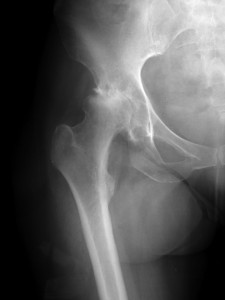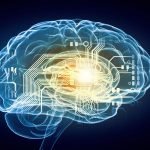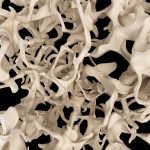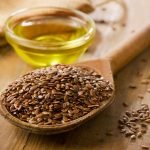The FOOT Plan: The Natural Osteoporosis Cure
Mark Swanson, ND
 With more than 22 years as an ND practicing in sunny Sequim, Wash., a popular retirement community, our clinic specializes in age-related health problems. Among the more common health concerns treated is the epidemic of thinning bones and osteoporosis.
With more than 22 years as an ND practicing in sunny Sequim, Wash., a popular retirement community, our clinic specializes in age-related health problems. Among the more common health concerns treated is the epidemic of thinning bones and osteoporosis.
However, this is neither a natural part of aging nor is it gender specific to women only. Older men are hunching over and fracturing bones at an alarming rate, too. This is a systemic skeletal disease, and is increasingly being diagnosed in early adulthood. The challenge for physicians is to:
- Prevent bone loss
- Diagnose and treat osteoporosis before fractures occur
- Prevent recurrent fractures (Moro, 2007).
This disorder results from a dynamic interplay between genomics, lifestyle, endocrine balance, weight loss and thinning, nutritional insufficiency, metabolic stress, medications, inflammation and immobility. We sum this all up by simply telling patients that osteoporosis does not result from a deficiency of bisphosphonate drugs! Rather, it responds the best and most robustly to the right natural medicine.
It became evident there were inherent problems with using the various combinations of calcium and vitamin D and most, if not all, of the multi-nutrient bone support products at our disposal. The question emerged: Do these products reverse bone loss? The answer: Not very well. They seemed to have some limited value for prevention, but most fell short of adequately treating bone loss. Patients would take them faithfully for years, only to be later diagnosed with osteopenia or osteoporosis. How could this be?
I decided to “bone up” on the most recent studies and revise my treatment protocol for managing osteoporosis. The result has been a highly successful, comprehensive bone restoring and anti-aging program that has resulted in rapid and marked effects on bone density, pain reduction, joint comfort, stability, fracture reduction, quality of life and general well-being.
A Bone to Pick
First on the agenda was to clean out the bone yard. Gone or revised from treatment was ipriflavone (Alexandersen et al., 2001; Moon et al., 2007; Harv Womens Health Watch, 2001), boron (Nielsen et al., 1987, 1992; Volpe et al, 1993; Beattie et al., 1993; Nielsen, 1992), soy isoflavone extract (Yuan et al., 2007; Vedrine et al., 2006; Vatanparast et al., 2007), manganese (Bressler et al., 2007; Finely et al., 1999; Miller et al., 2000; Finkelstein et al., 2007; Aschner, 2007), extra zinc/copper (Lai et al., 2005; Nielsen et al., 2004), vitamin D without testing (Heaney, 2007), calcium/D without adequate K2 (Payne et al., 2007), and vitamin K1 without adequate K2 (Schurgers et al., 2007). But wait, weren’t these well regarded as being necessary for bone support?
Either used standalone or combined with calcium and magnesium, these are among the “top tier” ingredients in hundreds of bone/osteoporosis support products. Unfortunately, much of their therapeutic benefit has been disproved, hyped, misinterpreted or illusionary. All turn out to be less than adequate as a primary nutritional therapy for treating osteoporosis. They simply have not proven to be outcome-specific enough with or without calcium. Most have questionable efficacy and some have safety concerns (Alexandersen et al., 2001; Moon et al., 2007; Harv Womens Health Watch, 2001; Nielsen et al., 1987, 1992; Volpe et al, 1993; Beattie et al., 1993; Nielsen, 1992; Yuan et al., 2007; Vedrine et al., 2006; Vatanparast et al., 2007; Bressler et al., 2007; Finely et al., 1999; Miller et al., 2000; Finkelstein et al., 2007; Aschner, 2007; Lai et al., 2005; Nielsen et al., 2004). It’s now time for a rational re-evaluation of what our healthcare profession can best utilize to treat this epidemic disease.
Fully Optimized Osteoporosis Therapy (The FOOT Plan)
Emerging evidence suggests that a fully optimized natural treatment for osteoporosis is available. This refers to the combined benefits offered as an effective primary therapy for osteoporosis reversal and having the important added value of being extra-skeletal protective. In addition to using more soluble and alkalinizing forms of calcium and magnesium and a revised upward amount of vitamin D3, this now includes strontium citrate, potassium citrate, vitamin K2 as MK7, melatonin, and plant and marine omega-3 fatty acids. Bio-identical hormone replacement (BHRT) also remains an important option.
FOOT Plan Outcome Criteria:
- Optimally combines diet, supplements, exercise and lifestyle counseling
- Achieves equal or greater increases in bone mineral density vs. bisphosphonates
- Increases osteoblast activity and inhibits osteoclast activity
- Increases bone density immediately and rapidly
- Promotes natural bone architecture, geometry and quality
- Provides fracture risk prevention at both vertebral and non-vertebral sites
- Complementary as anti-aging disease prevention
- Has no or minimal risk for side effects and toxicity.
The diet and supplement treatment program is briefly outlined next.
‘Return to Balance’ Diet
Reducing the risk of osteoporosis starts with a healthier dietary “Return to Balance.” The RTB diet is a modern dietary lifestyle that restores our ancestral profile. It can best be described as Mediterr-Asian in style. It has one of the lowest overall health risk indexes in the world. The RTB diet is ideally both bone strengthening and bone sparing. Because it is ancestral and genetically adapted, it continually promotes healthy gene expression. In other words, it fits our genes (Coxam et al., 2007; Altindag et al, 2007; Simpolulos, 2006, 2001; Frassetto et al., 2007, 2006; Eaton, 2006; Macdonald et al., 2005; Jugdaohsingh, 2007).
Key RTB features:
- Returns the ancestral balance of the EFA ratio (omega-6/omega-3 ratio <4:1, optimal 1-2:1)
- Provides omega-3 from land and sea (e.g., flax and fish)
- High in monounsaturated fatty acids (MUFA), especially unfiltered virgin olive oil
- High polyphenol content (e.g., fruit, berries, tea)
- Alkaline diet (low acidic/low NaCl) with a positive “K+ factor” (potassium/sodium ratio > 4)
- “Slow carb” (vs. low carb), which promotes a healthier gluco-insulin balance
- Provides dietary prebiotics, lignans, isoflavones, stilbenes, coumestans, curcuminoids and silicon
- Anti-inflammatory in effect
- Emphasis on foods that are natural, hormone and additive free, organic and unrefined.
Exercise/Fitness: Regular daily exercise that is both aerobic and weight bearing is a mandatory component of any osteoporosis or wellness program.
Osteoporosis Prevention and Treatment Protocol
Dosage instructions: Take all for DEXA-diagnosed osteoporosis and osteopenia. For prevention, take all except strontium. BHRT is optional and available by prescription only.
- Strontium (citrate) 680mg/day. Take all at bedtime (best) or daytime. Always take at least two hours away from any calcium source (e.g., dairy, supplements).
- Potassium (citrate) 600mg twice/day. Contraindicated with ACE inhibitors and potassium-sparing diuretics, unless physician approved. Take at or between meals.
- Calcium (citrate) or equivalent chelate 300-450mg twice/day at or between meals. Do not take within two hours of strontium.
- Magnesium (citrate) or equivalent chelate 200-300mg twice/day. Take at or between meals.
- Vitamin D3 2000IU/day. Dosage based on 25(OH)-D levels. Take at meals.
- Vitamin K synergy from K1/K2 K1 500-1,000µcg per day (contraindicated with warfarin); K2 (MK-7) 45-90µcg once per day (limited to 45µcg with warfarin). Take at meals.
- Omega-3 synergy from land and sea (flax/fish) Fish oil providing 2g EPA+DHA and flax oil providing 2g of alpha-linolenic acid (ALA) per day. Take at meals.
- Multi-vitamin/mineral complex (e.g., professional label) Encapsulated two per day.
- BHRT Individualized, optional.
- Melatonin 3-6mg. Take at bedtime.
Comments
Strontium Strontium is clearly superior to bisphosphonates as a standalone osteoporosis treatment. It uniquely strengthens micro-architecture, stimulates the formation of new bone and inhibits bone loss. Bisphosphonates only inhibit bone loss; they do not improve the micro-architecture or create new bone. Strontium reduces fracture risk at both vertebral and non-vertebral sites, has a longer sustained effect for at least five years, and is also proven effective in elderly women older than age 80. Almost universally, we see positive influences on dual-energy x-ray absorptiometry scanning (DEXA) T-score results following daytime calcium and nighttime strontium citrate. There is little doubt that strontium has a safe, strong and independent effect on bone health.
Patented strontium renelate, which most recent studies have utilized, is not exclusive to the mineral’s effect on bone. Strontium citrate is the preferred form used in natural medicine. Strontium is best indicated for treatment (vs. prevention), and the population is defined as patients with prevalent vertebral fractures and/or lumbar spine BMD T-score < -2.0 (Beuttenmuller et al., 2007; Meunier et al., 2004; Reginster et al., 2005).
Potassium Potassium citrate supplementation is emerging as an important bone support component. Potassium citrate supplementation increases calcium absorption, and reduces dietary acidity and urinary calcium loss via its strong alkalinizing properties. The combined treatment with calcium citrate reduces bone loss better than either alone. Potassium chloride or gluconate do not share these same effects (Sakhaee et al., 2005; Jehle et al., 2006; Marangella et al., 2004).
Calcium Meeting the daily requirement levels of dietary calcium to maintain neutral calcium balance in women and men may be lower than previously estimated. This is now predicted to be approximately 750mg/day. Calcium citrate is up to 2.5 times more bio-available than calcium carbonate, and reduces bone resorption significantly more than calcium carbonate in post-menopausal women. Therefore, dosages are not equivalent by comparison. Calcium is vital to bone metabolism but does not translate to complete osteoporosis support. For best results, a multi-mineral combination of calcium, magnesium and potassium as citrates is recommended (Heller et al., 1999; Sakhaee et al., 2005; Kenny et al., 2004; Hunt et al., 2007).
Magnesium Bone is the primary magnesium reservoir in the body. The mean intake of magnesium in men and women is below current recommended amounts, and intracellular insufficiency is common. Additionally, the acid-base status affects renal magnesium losses, irrespective of magnesium intake. This also increases potassium loss and bone resorption. Osteoporosis can also be considered a chronic inflamm-aging disease. Magnesium deficiency induces a decrease in osteoblast and increase in osteoclast activity via upregulation of bone remodeling associated with inflammation, e.g., Receptor Activator for Nuclear Factor κB Ligand (RANKL) stimulation, cytokine release, free radicals, etc. Magnesium helps maintain normal levels of C-reactive protein (CRP) for a healthy inflammatory response. This helps support bone mass in addition to maintaining a healthy heart, brain, joint, blood sugar balance and immune system. However, the link between magnesium deficiency and osteoporosis is controversial, as calcium and vitamin D deficiency often coincides. Studies on the effects of magnesium supplements on low bone mass is limited (De Martinis et al., 2006; Matsuzaki, 2006; Ginaldi et al., 2005; Tanaka et al., 2005; Mazur et al., 2007; Rude et al., 2004; Ryder et al., 2005; Huang et al., 2007; Rylander et al., 2006).
Vitamin D3 The prevalence of vitamin D depletion in patients seeking advice for osteoporosis is greater than 70% with cutoff levels of 30ng/ml. Its role in fracture prevention is equally related to its ability to maintain muscle strength, balance, comfort and physical performance, and prevent falling in the elderly vs. increasing bone quality and density. Fractures are reduced only when the serum 25(OH)-D concentration is maintained above 32ng/mL (80nmol/L). D3 greater than 2000IU per day and up to 50,000IU per week in addition to sunlight may be needed to achieve this minimum level in FOOT patients. The FOOT Plan goal is to maintain an optimum level between 50-60ng/ml throughout the year via supplements and sunlight. Vitamin D3 has a wide margin for safety, and toxicity is not a concern below 10,000IU/day. All FOOT patients are pre-screened with 25(OH)-D to determine supplement dosage needs. Vitamin D2 is less bio-available and is no longer considered equivalent (Holick, 2006; Heaney, 2007, 2005; Perez-Lopez, 2007; Inderjeeth et al., 2007; Wicherts et al., 2007).
Vitamins K1 and K2 Vitamin K promotes healthy bone quality, strength and micro-architecture. Vitamin K1, besides being a primary coagulation factor in the liver, activates osteocalcin in bone necessary for bone formation. Vitamin K2 primarily targets its activity outside the liver in bone and arteries. The virtues of K2 as MK7 (vs. K1) are its superior absorption and bioavailability, and sustained activity at physiological dosages. K2 and D work synergistically to prevent the osteoporosis-arterial calcification syndrome. Like vitamin D, the daily needs for vitamin K are not being met in most adults (Katsuyama et al., 2007; Schurgers et al., 2007; Pi-Thomas, n.d.; Hofbauer et al., 2007; Cranenburg et al., 2007).
Patients taking warfarin can safely maintain a consistent intake of foods that are high in vitamin K (rather than restrict it) in order to protect the bones and cardiovascular system. With careful monitoring of the International Normalized Ratio (INR), patients safely can take up to twice the amount found in a typical diet (Gaby, 2007; Franco et al., 2004; Feese et al., 2005).
Omega-3 Patients with insufficient omega-3 status (e.g., low serum fatty acids) or a high omega-6/3 EFA ratio lose more bone mass vs. individuals with a balanced intake. However, little is known about the direct relationship between omega-3 intake and osteoporosis. It is postulated that dietary supplementation with omega-3, which reduces pro-inflammatory eicosanoids and cytokines, extends its benefits to skeletal health and increased bone mineral density. Omega-3 and -6 also modulate gene expression affecting peroxisome proliferator-activated receptor g (PPARg) nuclear transcription factor. PPARg is expressed in adipose tissue and bone marrow. Lowering the omega-6/3 ratio may diminish PPARg activation and thereby promote osteoblastogenesis at the expense of bone marrow adiposity (Vanek et al., 2007; Griel et al., 2007; Weiss et al., 2005).
Melatonin We refer to this as the body’s master anti-aging hormone that provides patients with an extra margin of wellness and prevention. Systemically it acts as a powerful antioxidant, cellular rejuvenator and modulator of healthy gene expression. There is a growing body of research on the melatonin-bone connection. It suggests this hormone increases osteoblast and decreases osteoclast functions via RANKL-mediated downregulation and adipocytic effects on bone marrow. Outside of its use as a sleep aid, melatonin is a vastly underutilized supplement (Sanchez-Hidalso et al., 2007; Koyama et al., 2002; Witt-Enderby et al., 2006; Cardinali et al., 2003).
BHRT: Natural BHRT (TriEst, BiEst, natural progesterone) is best utilized for slowing bone loss during the first five to seven years following menopause and following discontinuing conjugated estrogens. Available data demonstrate that HRT’s bone-sparing inhibition of osteoclasts is related to its inhibition of cytokine release, e.g., IL-1 and TNF, which are induced by estrogen deficiency. This is synergistic to the actions of other anti-inflammatory FOOT nutrients: magnesium, melatonin, omega-3 and dietary antioxidants. In men with low bone mass, testosterone replacement should also be evaluated. DHEA may be of some benefit, but it is unlikely to be effective below 50mg per day. BHRT should be an informed and individual choice (Pacifica, 1996; Jankowski et al., 2006; Nair et al., 2006; Raven et al., 2007).
FOOT Plan Rationale and Expectations
The FOOT Plan provides a broad-spectrum bone support program. It goes beyond the current status quo of bone support products and redefines the criteria needed for effective osteoporosis prevention and treatment support. The rationale is to maintain normal bone composition, strength and resiliency; lessen fragility; and prevent fractures. With proper patient adherence and monitoring, the expected outcome of strong and healthy bones is likely to be achieved. This program also extends beyond the skeletal system as a comprehensive anti-aging support plan for a healthy heart, mind, joints, immune system and graceful longevity.
So what about all those other bone-support products that still line the shelves of the clinic dispensary? As long as the FOOT protocol is followed, they may have a place.
Note: The FOOT Plan is for educational purposes only. It is not intended to be used to determine the treatment appropriate for any specific patient and it is not a prescription for treatment of any disease condition.
Editor’s Note: Dr. Swanson’s extensive list of references regarding the information provided in this article is available online at www.ndnr.com.
 Mark Swanson, ND, writes “The Expert Report” column, which is featured in NDNR. Dr. Swanson has over 25 years experience as chief medical advisor, research and technical consultant, and products formulations expert to leading practitioner brand supplement manufacturers. He is a former associate editor for the American Journal of Naturopathic Medicine, national product director, and published researcher. He is a pioneer graduate of Bastyr University, 1984. Dr. Swanson has his private practice specializing in Preventics Care and Functional Medicine, in Sequim, Washington. Contact: [email protected]
Mark Swanson, ND, writes “The Expert Report” column, which is featured in NDNR. Dr. Swanson has over 25 years experience as chief medical advisor, research and technical consultant, and products formulations expert to leading practitioner brand supplement manufacturers. He is a former associate editor for the American Journal of Naturopathic Medicine, national product director, and published researcher. He is a pioneer graduate of Bastyr University, 1984. Dr. Swanson has his private practice specializing in Preventics Care and Functional Medicine, in Sequim, Washington. Contact: [email protected]










